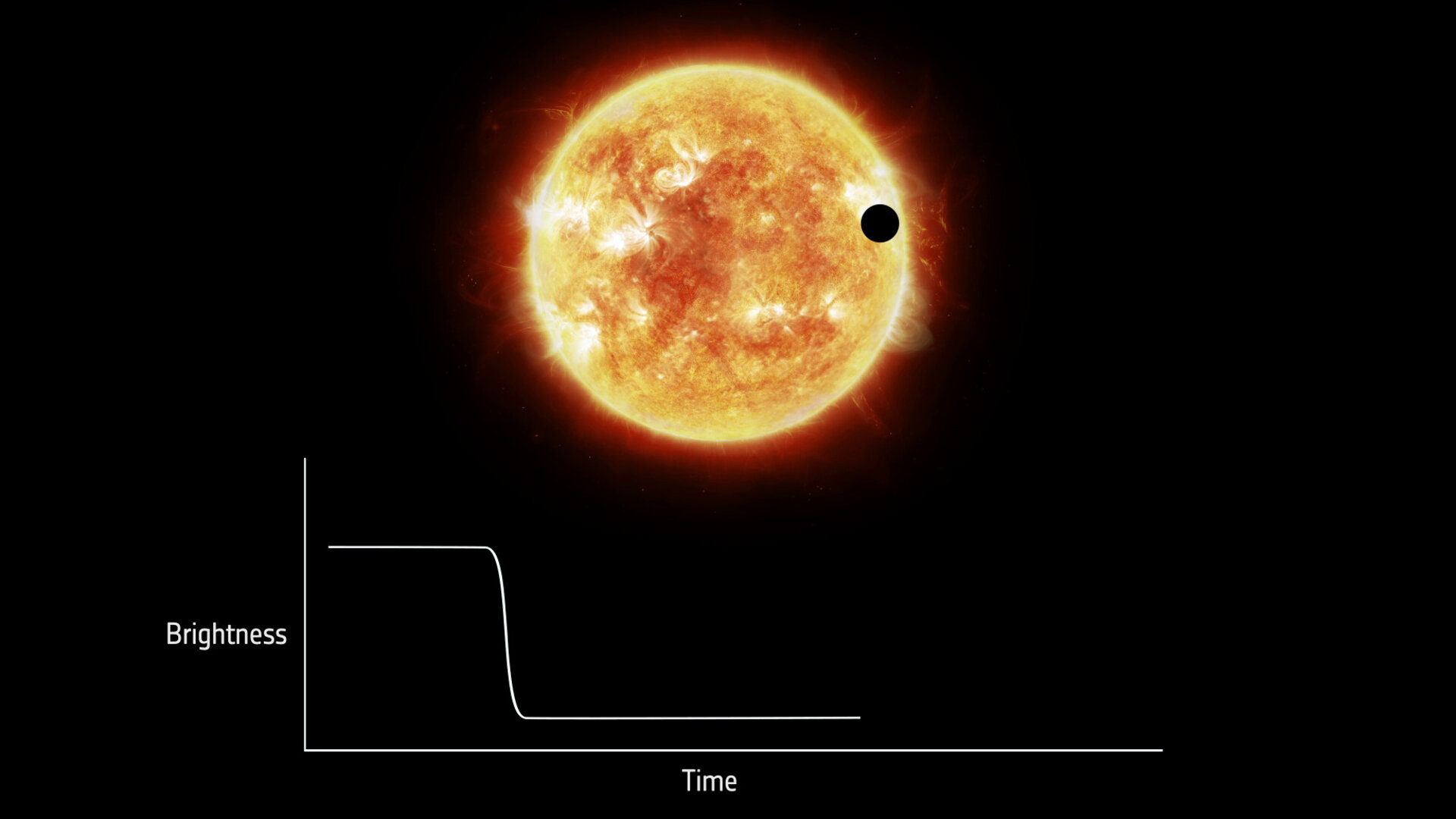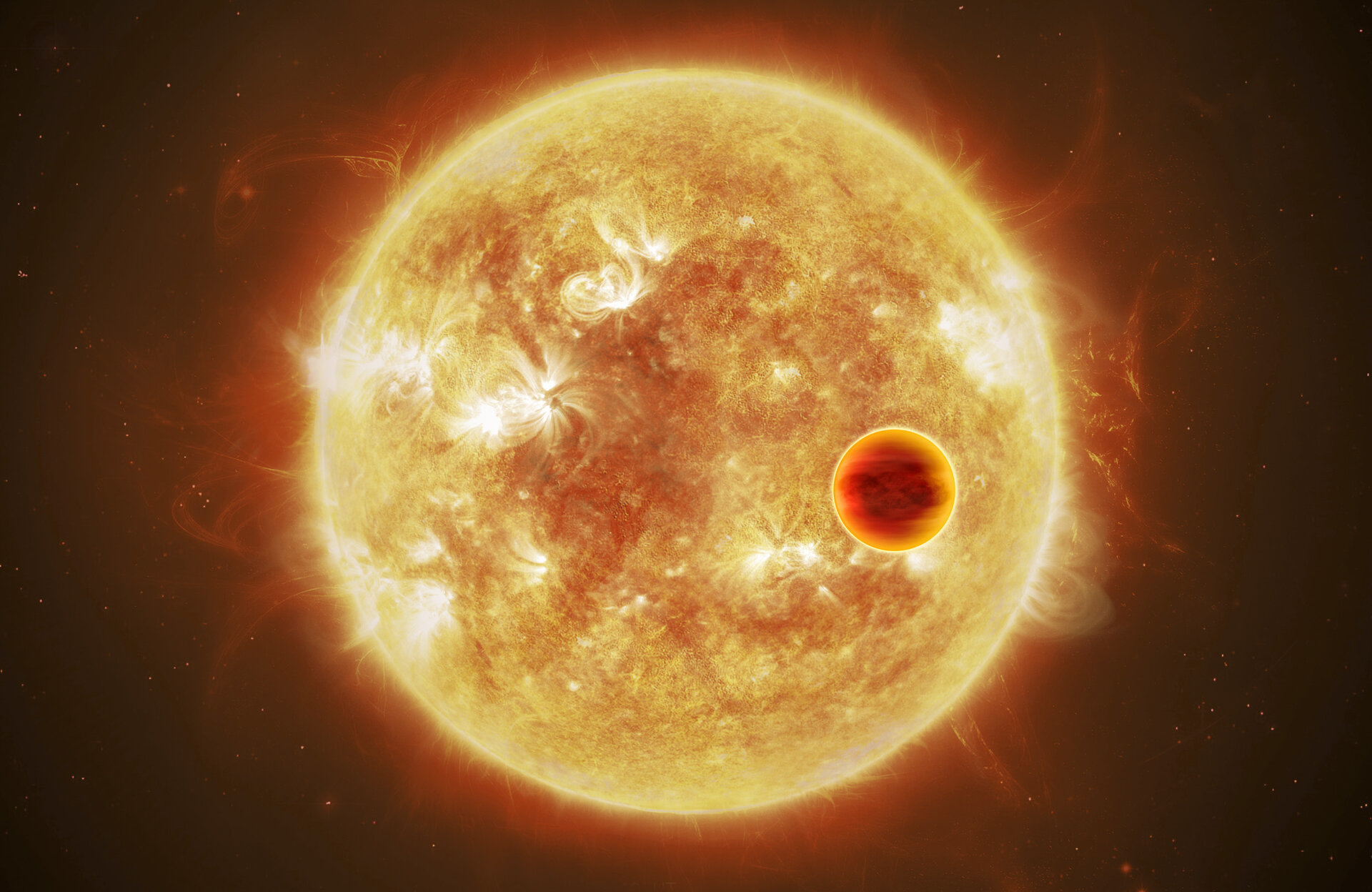ExoClock: a timely collaboration
In brief
ESA’s Ariel mission will study what exoplanets are made of, how they formed, and how they have evolved. Ariel will survey a diverse sample of about 1000 planets in just four years, which requires good time management. That is why we are calling upon amateur astronomers to already point their telescopes towards the exoplanets’ host stars, to together determine accurately when planets pass by. This will help us optimise Ariel’s observing time!
In-depth
Transit time

Ariel will study transiting exoplanets. This group of exoplanets are found when they pass in front of their host stars when viewed from Earth, briefly dimming the starlight we receive. About 80% of the exoplanets discovered so far were detected this way. However, for many planets it is not known when exactly they pass in front of their stars. To solve this problem, the ExoClock project was brought to life, bringing together professional astronomers, amateur astronomers, students, and everyone passionate about the study of exoplanets.
Observations using ground-based telescopes are not accurate enough to address Ariel’s scientific aims, but they can be used to prepare for the observations that Ariel will make. The ExoClock team combines observations from telescopes all over the world to find out when Ariel’s target planets pass in front of their stars. Knowing this information is essential so that Ariel’s limited time in space can be used in the most efficient way.


Access the video
The project

Everyone with a basic telescope and camera can sign up to the project. The ExoClock team developed all the necessary tools to make this experience interactive and fun, maintaining the scientific robustness of the results. Each observer will get personal advice based on their experience and their equipment and will be able to follow meetings and tutorials about the software tools and the project. Participants are asked to monitor a certain target star during the night around the time its planet is thought to transit. Subsequently, participants can use their data and the ExoClock team’s software to determine the exact transit time. The measured light curve and transit time can then be uploaded to the project website. The transit time helps determine the orbital period of the planet around its star and its future transits. Participants are rewarded with co-authorship to summarising papers based on their results.
Through ExoClock, people are part of an international interactive community where they have the unique opportunity of contributing to a real space mission. At the same time, participants experience an educational journey of continuous learning about exoplanets, observing and data analysis. They also get the chance to meet with people from different backgrounds and countries and join online and in person meetings.
Want to get involved? Register your telescope and location on the ExoClock website and discover which transits will be visible from your garden next.
No telescope? No problem!
Opportunities can also arise for participants that do not have their own equipment. For example, in December 2023, ExoClock collaborated with Telescope Live and the Las Cumbres Observatory through the LCO Global Sky Partners programme. This collaboration allowed people with no equipment to use professional observatories to measure targets of interest. The participants helped find the exact transit time using data analysis tools provided.


